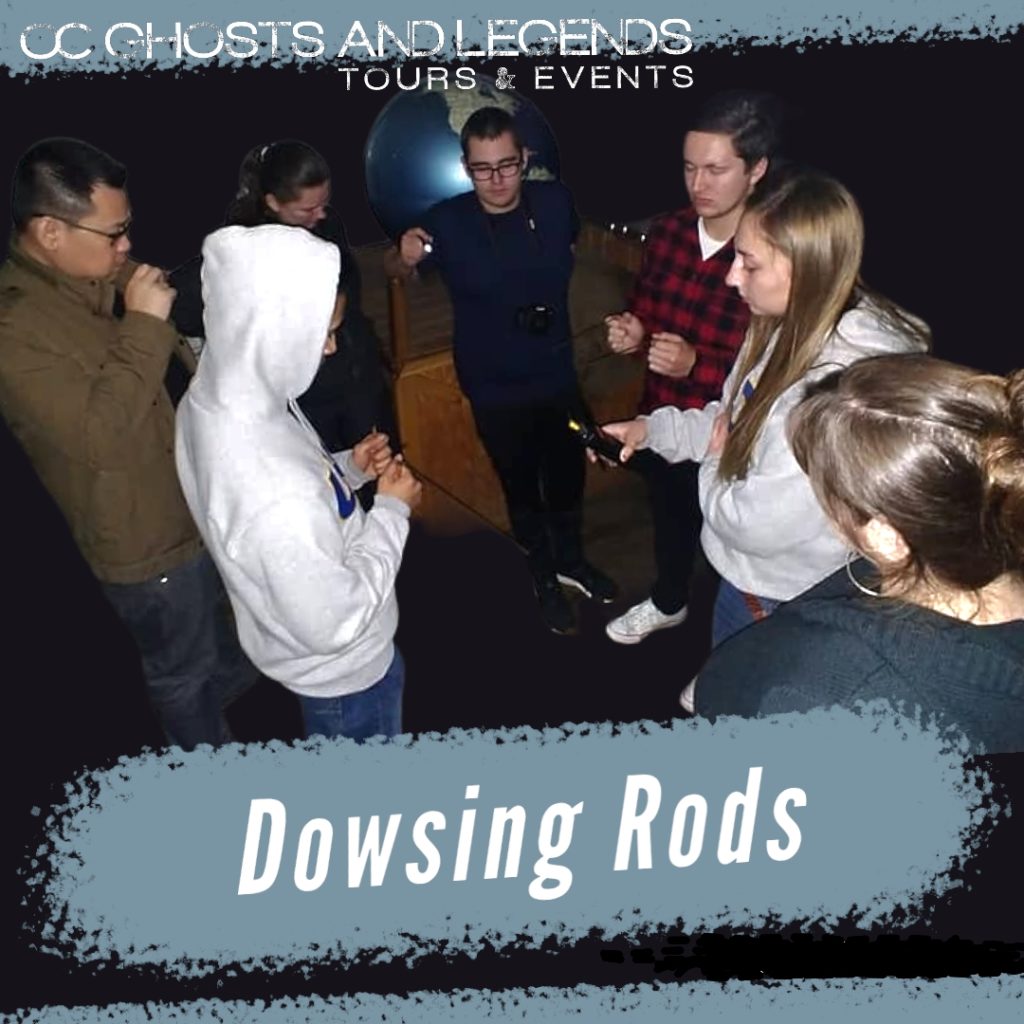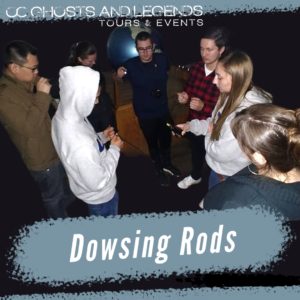You are taking part in a paranormal investigation and your group is made of your usual people. You have the skeptic who believes that everything has a natural or logical answer. Being a full-blown believer that every little sound is some form of supernatural communication.
You may be a open-minded skeptic who wants to believe, or is still indecisive and in it for the fun. Whichever one of these that you identify with, you are excited about the investigation.
You arrive at your location and start wondering what tool(s) you will be using for the investigation? You can start with a recorder, a basic but reliable way of investigating. What about the K-II Meter? Another instrument in the repertoire of any paranormal investigator. One of your fellow investigators brings out something from the bag. You look at it and notice… it is shiny. You stand there in awe mesmerized of the way the light hits the object and because you recognize it. They are Dowsing rods.
Before we jump into how Dowsing Rods have anything to do with the paranormal, let’s quickly review what the original purpose of Dowsing is:
“Dowsing is a type of divination employed in attempts to locate ground water, buried metals or ores, gemstones, oil, claimed radiations (radiesthesia), gravesites, malign ‘earth vibrations’ and many other objects and materials without the use of a scientific apparatus. It is also known as divining (especially in water divining), doodlebugging (particularly in the United States, in searching for petroleum) or (when searching for water) water finding, or water witching (in the United States).”
Source: Wikipedia
What is Water Dowsing?
“Water dowsing” refers in general to the practice of using a forked stick, rod, pendulum, or similar device to locate underground water, minerals, or other hidden or lost substances, and has been a subject of discussion and controversy for hundreds, if not thousands, of years.
Although tools and methods vary widely, most dowsers (also called diviners or water witches) probably still use the traditional forked stick, which may come from a variety of trees, including the willow, peach, and witch hazel. Other dowsers may use keys, wire coat hangers, pliers, wire rods, pendulums, various kinds of elaborate boxes and electrical instruments, or even no equipment at all.
In the classic method of using a forked stick, one fork is held in each hand with the palms upward. The bottom or butt end of the “Y” is pointed skyward at an angle of about 45 degrees. The dowser then walks back and forth over the area to be tested. When she/he passes over a source of water, the butt end of the stick is supposed to rotate or be attracted downward.
Water dowsers practice mainly in rural or suburban communities where residents are uncertain as to how to locate the best and cheapest supply of groundwater. Because the drilling and development of a well often costs more than a thousand dollars, homeowners are understandably reluctant to gamble on a dry hole and turn to the water dowser for advice.
Back to the Paranormal…..
Dowsing rods are another basic tool often used by curious paranormalists. A little less technical than some of the other equipment; but, sometimes more reactive than some of the newer equipment. Rarely do we utilize the dowsing rods in our own investigations, however, here’s the general idea of how it works:
They are two rods in an L shape and have tubes on the short side of the L shape. You hold one in each hand and they can cross, separate, or remain in the same position. The way they are supposed to be held is by the tube perpendicular to the ground, letting the actual rod move freely. After the technique of holding the rod is mastered, you establish what a “yes” response is and what a “no” response is. After that, you have free range of what questions you can ask the local spirits.
What does Science say?
As with all things paranormal, there are always other explanations provided.
“The motion of such dowsing devices is generally attributed to the ideomotor phenomenon, a psychological response where a subject makes motions unconsciously. Put simply, dowsing rods respond to the user’s accidental or involuntary movements”
Science simply chalks it up to “random chance.” Many paranormal enthusiasts swear by their experiences with dowsing rods.
What do you think? Have you had success with dowsing rods?
Try your hand (no pun intended) with dowsing rods and book one of our signature private ghost investigations, led by our experienced team members.
Check out your unique venue choices HERE
Be safe and happy hunting!

Larry Zamora
OCGL Investigator
** This blog consists of opinions that reflect on a variety of topics within the paranormal realm and anomalous research. Statements on this blog reflect the author’s personal opinions and do not represent the overall views and/or policies of our organization.
OC Ghosts and Legends promotes an environment for our team members to be able to share thoughts, ideas and theories of the paranormal with respect to our team mission and philosophy. All content provided is for educational, informational and entertainment purposes only






